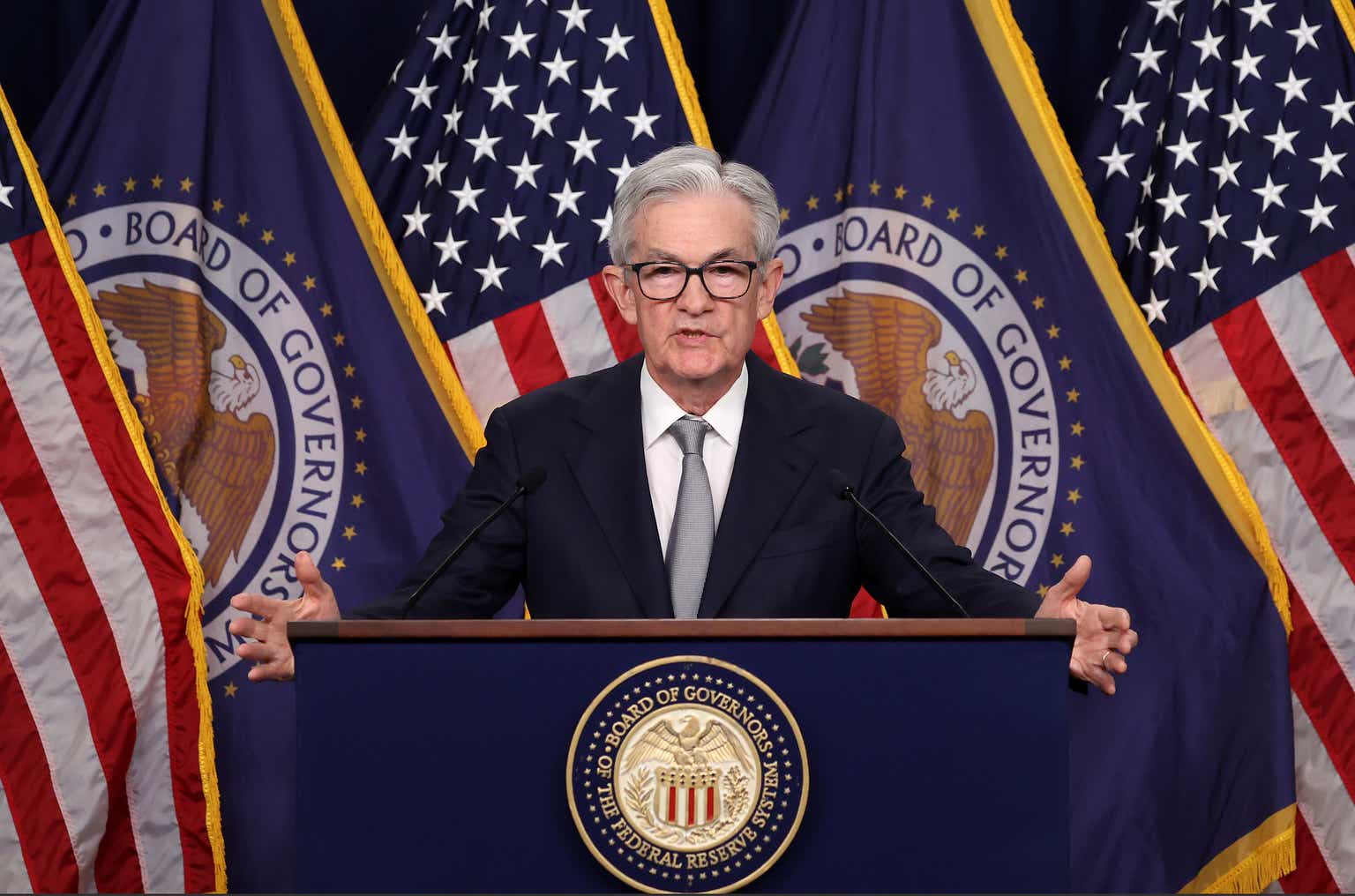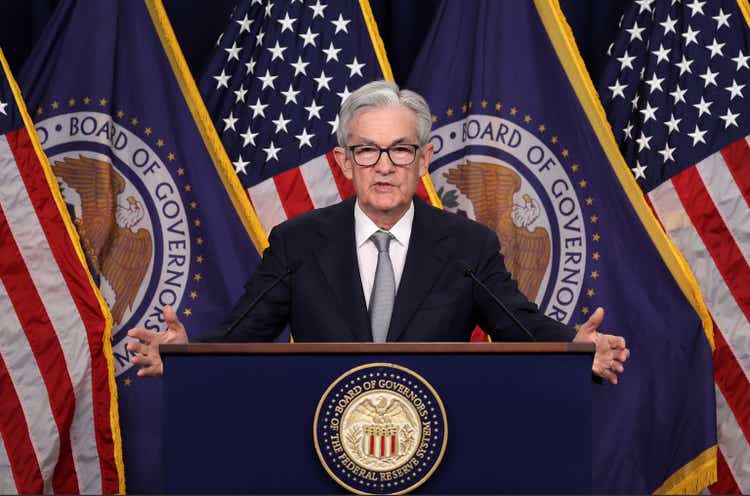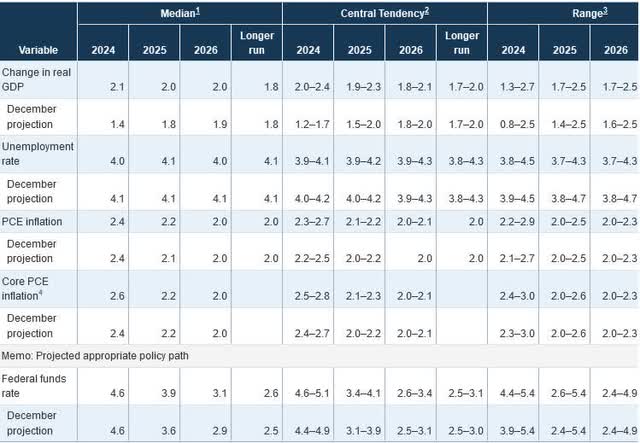

Kevin Dickey
The Federal Reserve concluded its second FOMC meeting this year on March 19th.
The official policy statement contains two policy decisions:
- The Fed will maintain the federal funds rate at a target range of 5.25% to 5.50%
- the fed will As previously announced, it continues to reduce its holdings of Treasury bonds and MBS.
The Fed has maintained this federal funds target range since July 2023, and has not made any adjustments at five consecutive FOMC meetings.
In addition, the Federal Reserve will launch the balance sheet reduction policy in May 2022 and has not made adjustments for fifteen consecutive FOMC meetings.
After the Federal Open Market Committee meeting concluded and issued a policy statement, Federal Reserve Chairman Powell held a press conference to learn more about the Federal Reserve’s thoughts and answer questions from the media.
this The Fed also released its latest Summary of Economic Projections (SEP) to provide more guidance on their thinking. The SEP lists each of the 19 FOMC members’ expectations for the next few years. It covers economic growth, unemployment, inflation and interest rates. Importantly, only 12 of the 19 FOMC members vote on policy.

United States Federal Reserve
Here are my main takeaways:
federal funds rate
The main focus in the market is what will happen to the federal funds rate. It’s the most useful tool in the Fed’s monetary policy toolbox, so it’s significant.
Thirteen of the 18 questions posed to Chairman Powell were, in one form or another, an attempt to glean the movement and timing of changes in the federal funds rate.
The questions cover key economic indicators such as inflation, employment and economic strength to gain insights.
What’s interesting is how Powell’s comments compare to the market’s interpretation of his remarks. They are not always consistent.
Powell said:
“The Fed’s monetary policy actions are guided by our mission to promote maximum employment and price stability for the American people. We are firmly committed to returning inflation to our 2.0% goal.”
“We believe our policy rates are likely to have peaked during this tightening cycle, and if the economy broadly develops as expected, it may be appropriate to begin easing policy restrictions at some point this year.”
“We know that reducing policy restrictions too early or too much could lead to a reversal of the progress we have made on inflation and ultimately require tighter policy to get inflation back to 2.0%. At the same time, reducing policy restrictions too late or too little could unduly weaken economic activity and employment.”
“The Committee does not expect it to be appropriate to reduce the target range until it is more confident that inflation will continue to fall to 2.0%.”
“If the economy develops as expected, the median participant expects the appropriate level of the federal funds rate to be 4.6% at the end of this year, 3.9% at the end of 2025, and 3.1% at the end of 2026.”
“The decisions we make at each meeting … (will) depend on our ongoing assessment of incoming data, the evolving outlook and the balance of risks.”
“The committee would like to see more data that would give us more confidence that inflation is continuing to fall to 2.0%… We are not seeing that data right now.”
“Now we’ve had nine months of 2.5% inflation and we’ve had two months of volatile inflation…the question is; are they more than just bumps? And we just don’t know that.”
Market interpretation:
Markets interpreted Powell’s comments as dovish, with stocks and bonds rising on the news. The stock market even hit an all-time high.
balance sheet runoff
In a press release after the Federal Open Market Committee meeting, the Fed announced that it would continue to reduce its holdings of U.S. Treasuries and MBS in accordance with its previously announced plan.
In his opening remarks, Powell said the committee discussed slowing the pace of balance sheet reduction and suggested the slowdown would begin soon. He made clear that slowing the pace of balance sheet reduction would not affect the final finish line of the runoff. However, as the Fed approaches adequate reserve levels, this will prevent money markets from coming under stress.
At the subsequent press conference, three questions about the balance sheet were asked. This is the highest number of inquiries since the Fed began quantitative tightening (QT) two years ago.
Powell revealed during the Q&A that the slower pace only applies to Treasury bonds. That’s because mortgage-backed securities are already running below the Fed’s target rate. While the Fed’s long-term goal is to hold a national portfolio of bond securities, that is not the focus now.
Powell mentioned the Fed’s last attempt at quantitative easing in 2019. “Slow down and you’ll get further,” he said. What he meant was that by slowing down the runoffs, the Fed would be at risk of the kind of liquidity problems it faced in 2019, which caused The QT process ended prematurely.
In mid-September 2019, overnight money market rates surged to nearly 10% due to liquidity imbalances and a sharp decline in reserves. In response, the Fed reversed course, ending quantitative easing and buying Treasury bills to rebuild reserves.
Powell said liquidity is not always evenly distributed across the system. While overall reserves may be adequate, even abundant, some banks may not be, which could cause stress. By moving slowly as the Fed approaches the QT endpoint, they are better equipped to handle the situation.
central bank digital currency
On a more unusual note, Powell was asked for the first time what the Fed was doing with regard to a digital dollar, as there have been some rumors in Congress that the Fed is exploring the issue.
Powell quickly shot down the idea. The Federal Reserve has not proposed, nor is it considering proposing, Congress to initiate legislation authorizing a digital dollar.
He did acknowledge, however, that the Fed is trying to be at the forefront of digital finance, particularly when it comes to digital payment systems. He emphasized that the Fed is not studying central bank digital currency, but is trying to improve understanding of this concept.
in conclusion
Chairman Powell’s comments have been very consistent since QT began. The Fed’s focus is on maximizing employment and stabilizing prices. Employment has been strong, and while inflation has been declining, it has been bumpy and remains above the 2.0% target.
The Fed needs to see compelling evidence to be confident that inflation can sustainably fall to 2.0%.
Although the market is interpreting Powell’s recent comments as more dovish, the Fed may show more patience than expected until they feel confident to act.


